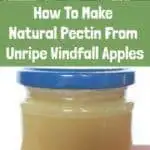
Making natural pectin from unripe windfall apples is a great way to avoid waste.
Have you ever thought it a shame that all those unripe apples fall from your trees before they are ripe?
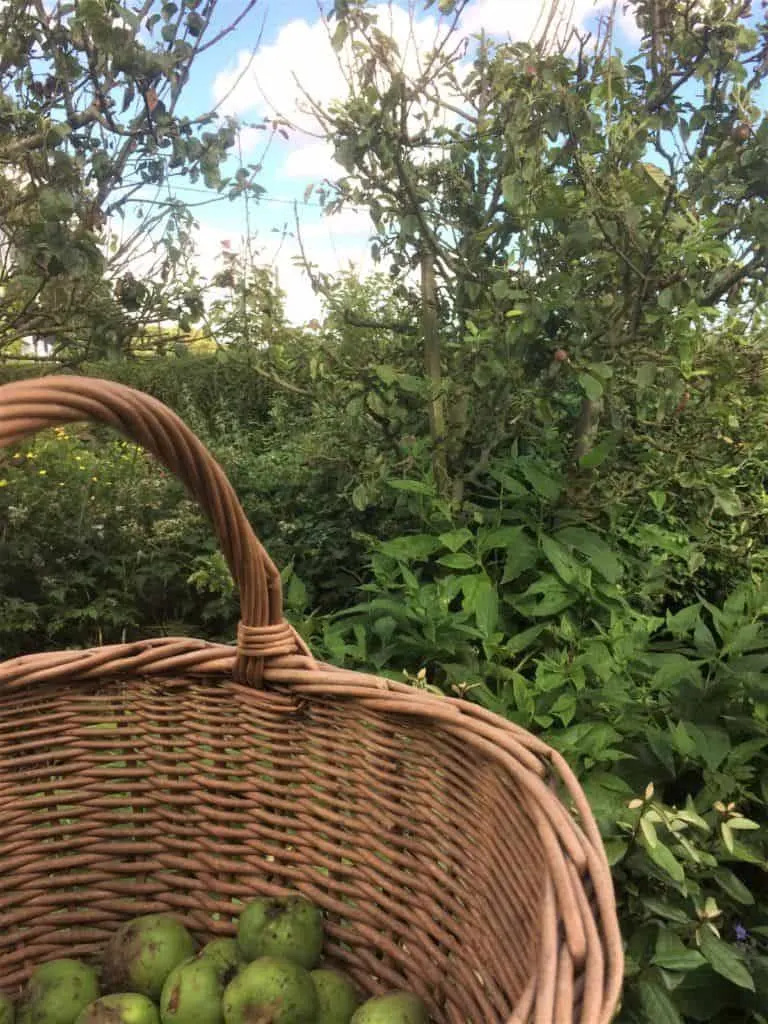
The good news is that you can make use of those windfall apples to make a useful ingredient to use in home-made jams.
(In fact, there are a whole host of ways to make use of windfall apples.)
It can be used as an alternative to store-bought pectin.
Though the small unripe apples will be unappetizing to eat, they are rich in this natural ingredient, which helps jams and jellies to set.
Collecting Windfall Apples for Natural Pectin
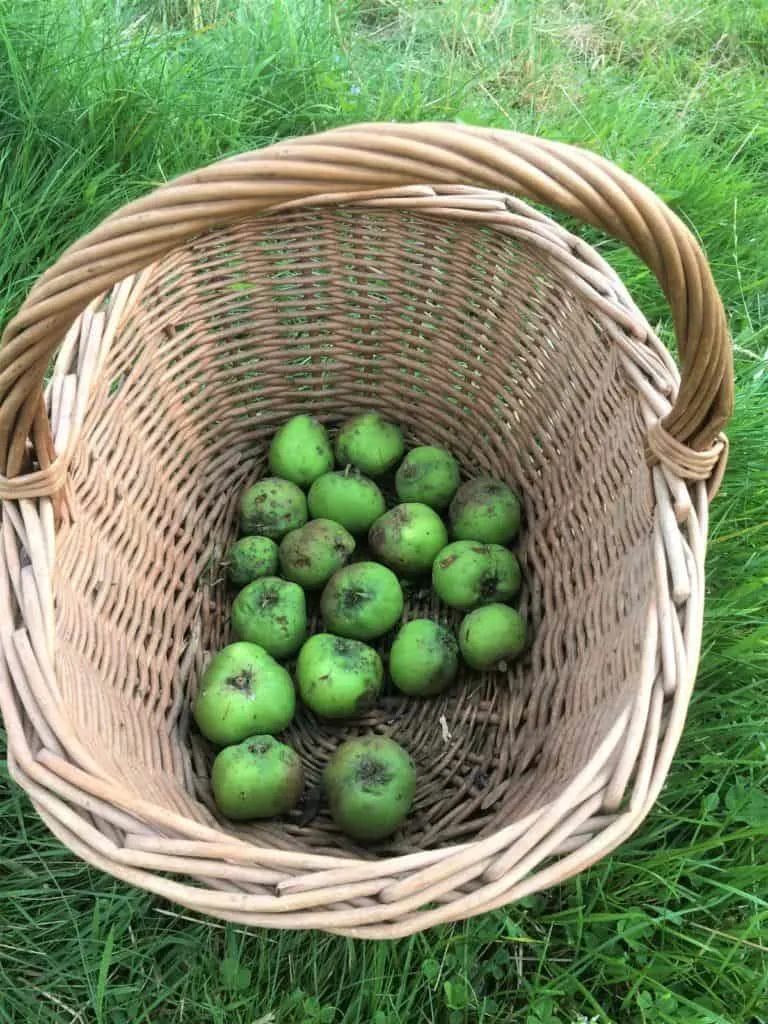
Our chickens don’t eat the early windfalls, so I am free to go collect them. I try to collect them on a dry day, so they are easier to clean.
Of course, it is also important to check the windfall apples thoroughly to make sure that no little creatures have already made their way inside.
We usually have quite a few windfalls, as we have five different apple trees. But if you do not have apple trees in your garden, crabapples harvested from the local area (or even from your own tree) will also do nicely.
Preparing Unripe Windfall Apples
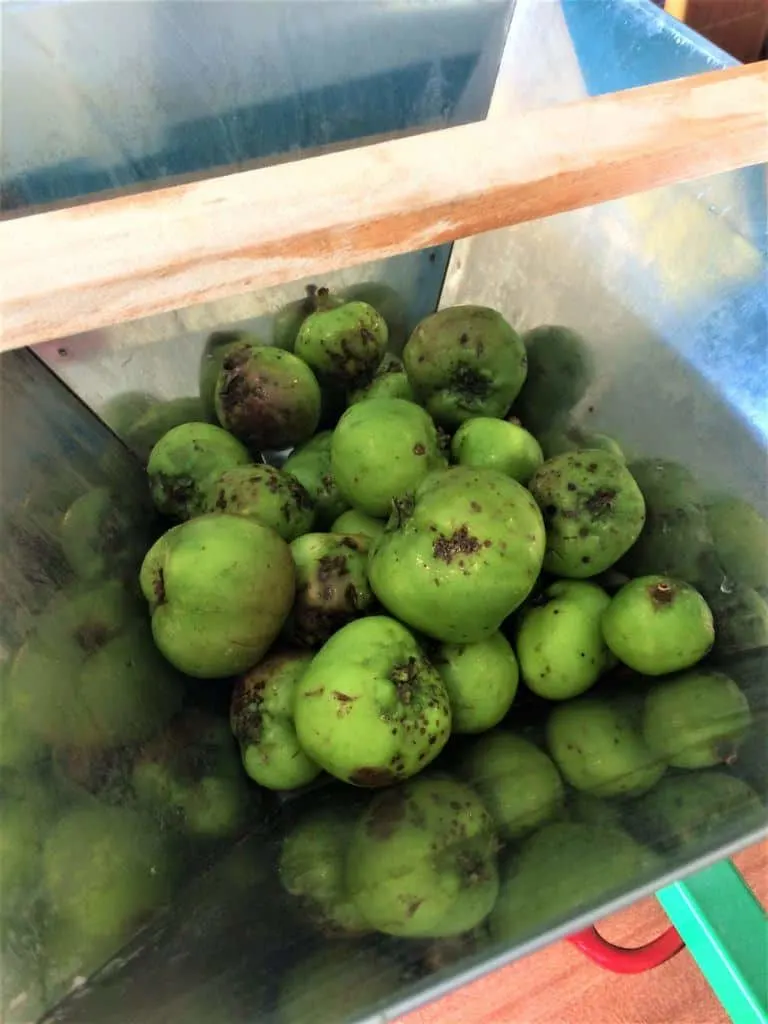
Since we have so many apples to process, and use many of them for apple juice/ cider later in the season, we have a hand-cranked crusher.
I wash the apples and then use this to break up the apples prior to cooking them and beginning the process of making the natural pectin.
However, if you do not have one of these then you can easily just chop up the windfall apples by hand. Leave in the cores and do not peel them. The core and peel is where much of the pectin in the fruits is found.
Place the chopped up/ crushed apples into a large cooking pot.
Making the Natural Pectin
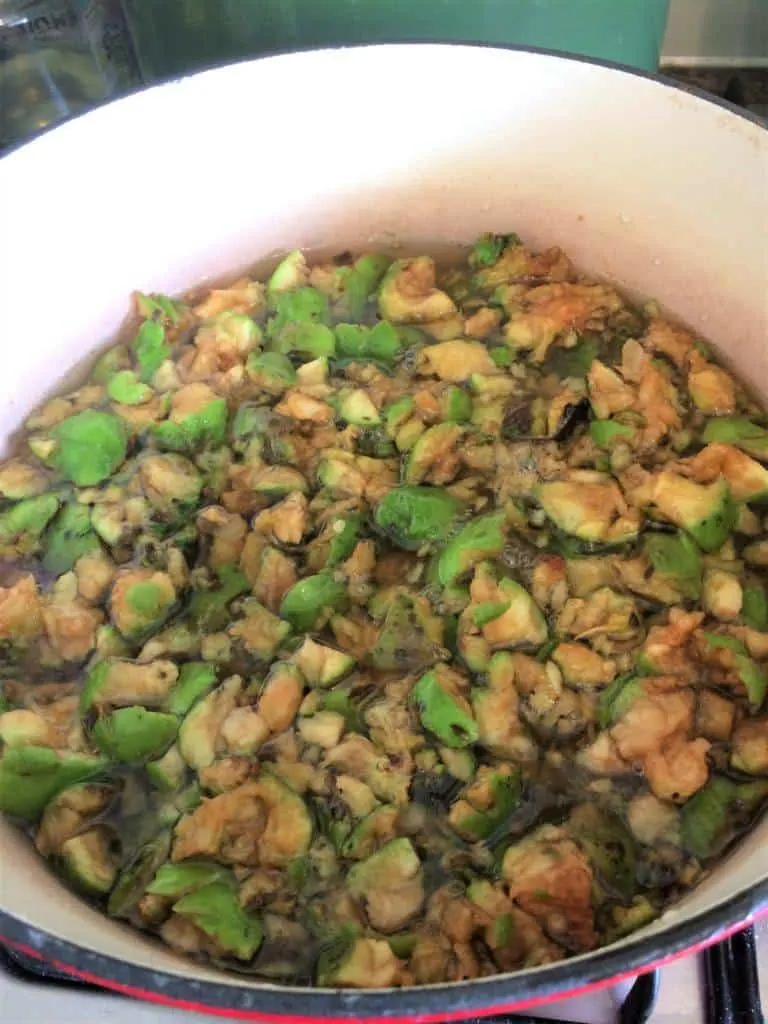
- Cover the apples with enough water to just cover them.
- Boil on your stove top until all of the apple has broken down and become a soft mush.
- Strain the mush through a sieve or cheesecloth.
(It is quicker to strain through a sieve, although some fruit fibre can pass through so if you would like to use the pectin to make a clear jelly, it is best to use cheesecloth or muslin.)
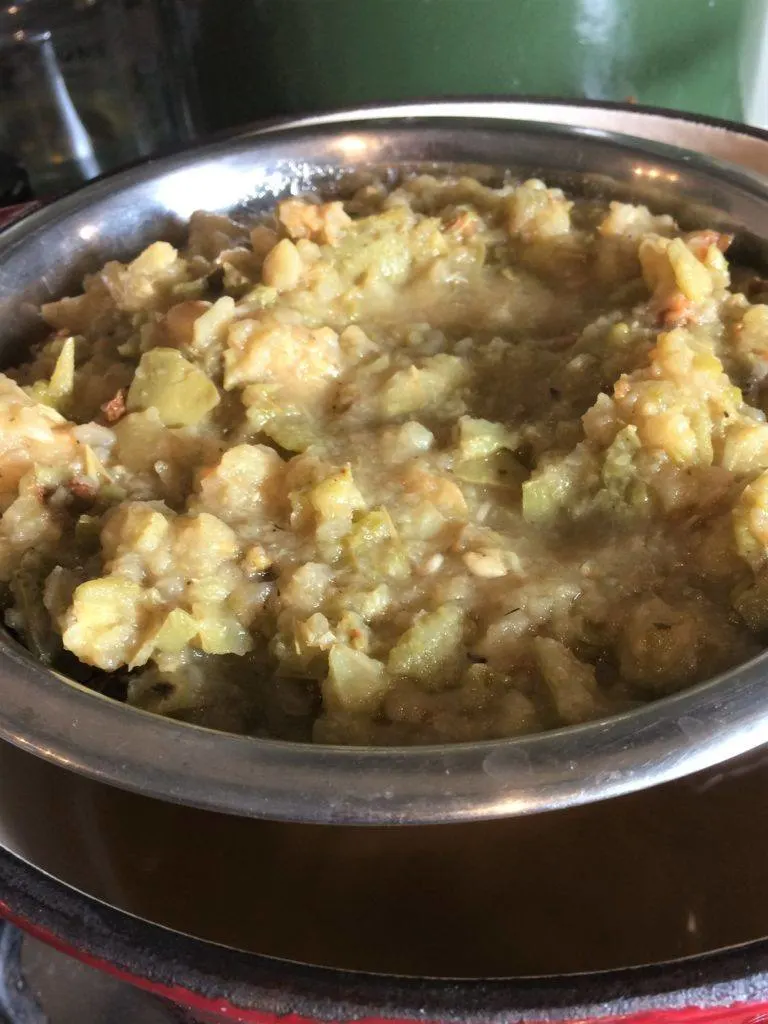
This process can take some time, so it is best to leave the apple mush to strain for several hours, or overnight. Leave the sieve or cloth suspended above another pan or container.
Be sure to cover the apples to prevent them from attracting insects or getting contaminated with dirt. Especially if you want to make clear jellies, do not be tempted to push the apple mulch through the sieve or cloth, as the more fruit fiber gets through, the more cloudy the finished pectin will be.
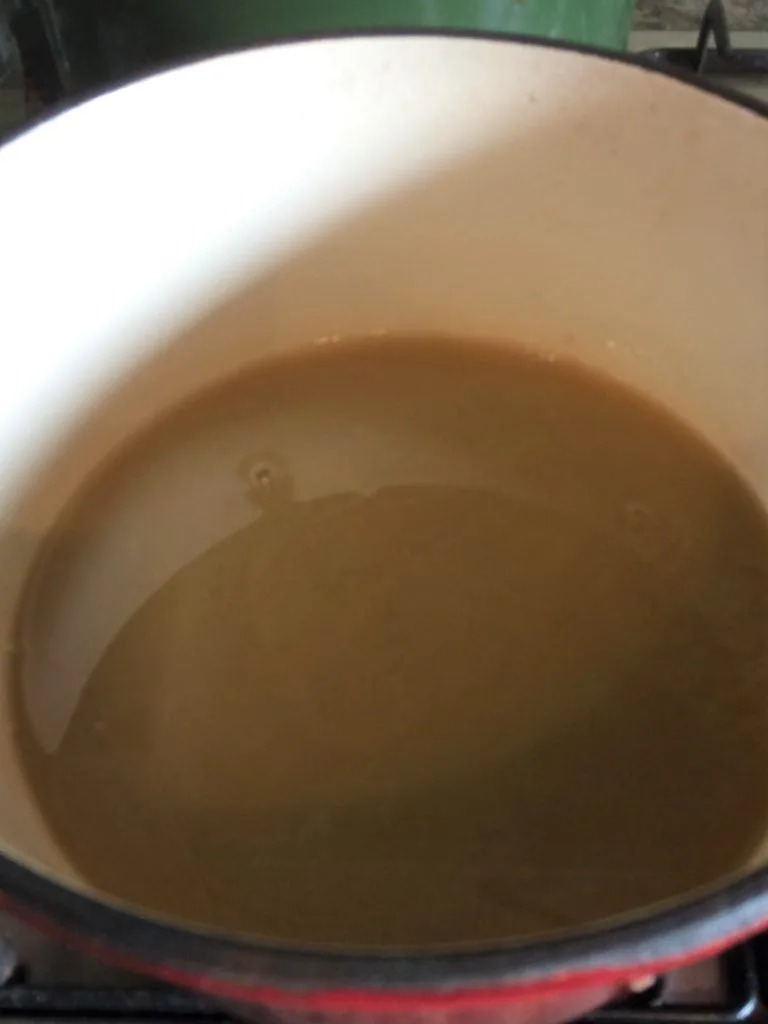
Testing Your Pectin
This stage is not always necessary, but if you want to be sure that your pectin is concentrated enough to successfully set your jam, there is a quick and easy test that you can undertake.
For this test, you will require a bottle of methylated spirits. This is available in most pharmacies or hardware stores, or can be purchased online.
To test your natural apple pectin:
- Take a teaspoon of the strained fruit solution and drop it into a cold glass.
- Add three teaspoons of methylated spirit and swirl the glass around, or give it a stir.
- If a large clot forms, the pectin is adequately concentrated and you can store it for later use or use it for jam making right away.
- If only small clots form, the pectin may be lacking in concentration and so it is a good idea to simmer your strained apple mixture on the stove top to concentrate it a little more.
(Note: this is not edible. Do not taste the methylated spirit mix.)
Once you are happy that your pectin will set jams, you can store it, or use it right away.
Storing Natural Pectin
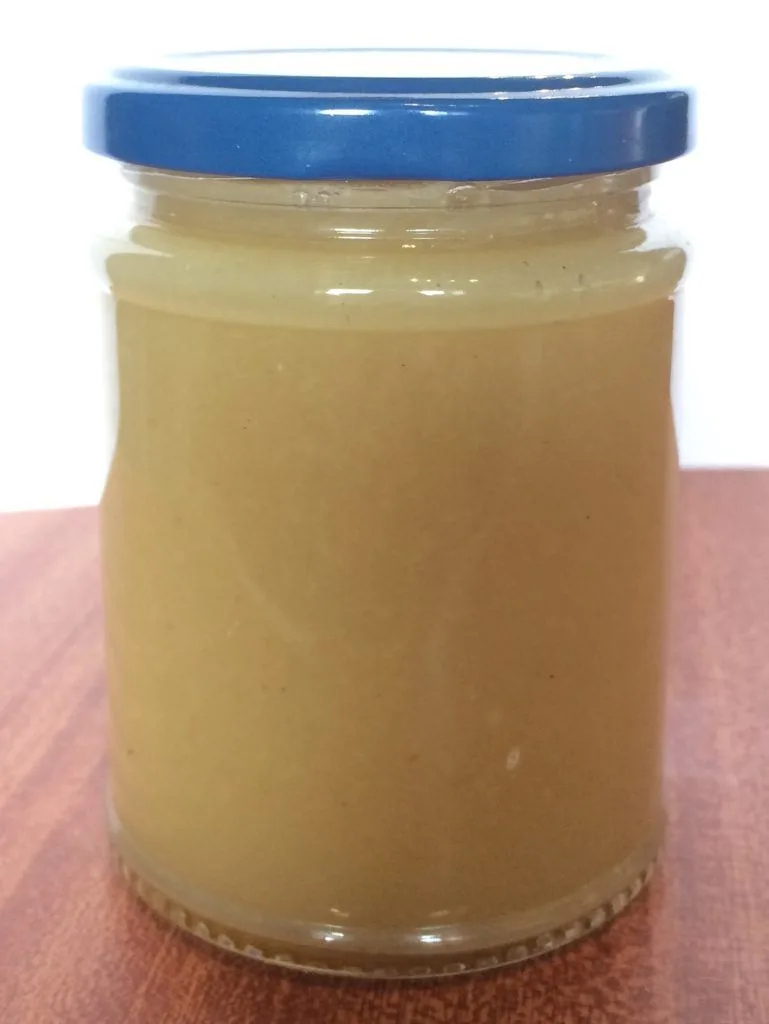
I decanted my natural pectin from unripe windfall apples into a couple of sterilized glass jars. The jars were first washed thoroughly and dried, then placed into the oven at around 120 degrees. (Place the jars into a cool oven rather than into a pre-heated one, as otherwise they may shatter.)
As I planned to use my home-made pectin within three days, I did not need to think about preserving it for longer, and simply placed it in the fridge.
However, if you do not plan on using your pectin right away, you can preserve it by boiling the jars in a water bath canner.
To Can Home-Made Pectin:
- Pour the pectin into sterilized canning jars. (Leaving ¼ inch space at the top.)
- Process in boiling water for ten minutes.
- Leave the jars to cool completely, check the seals and label your jars.
- Store your canned pectin in a reasonably cool place for up to one year.
You could also consider freezing your pectin to use it later in the year.
To Freeze Home-Made Pectin:
- Pour the pectin into containers that can be safely used in the freezer. (Leaving ½ inch of space to allow for expansion.)
- Leave the mix to cool completely if it is not already cool.
- Seal the containers and freeze for up to six months.
Using Natural Pectin to Make Jam
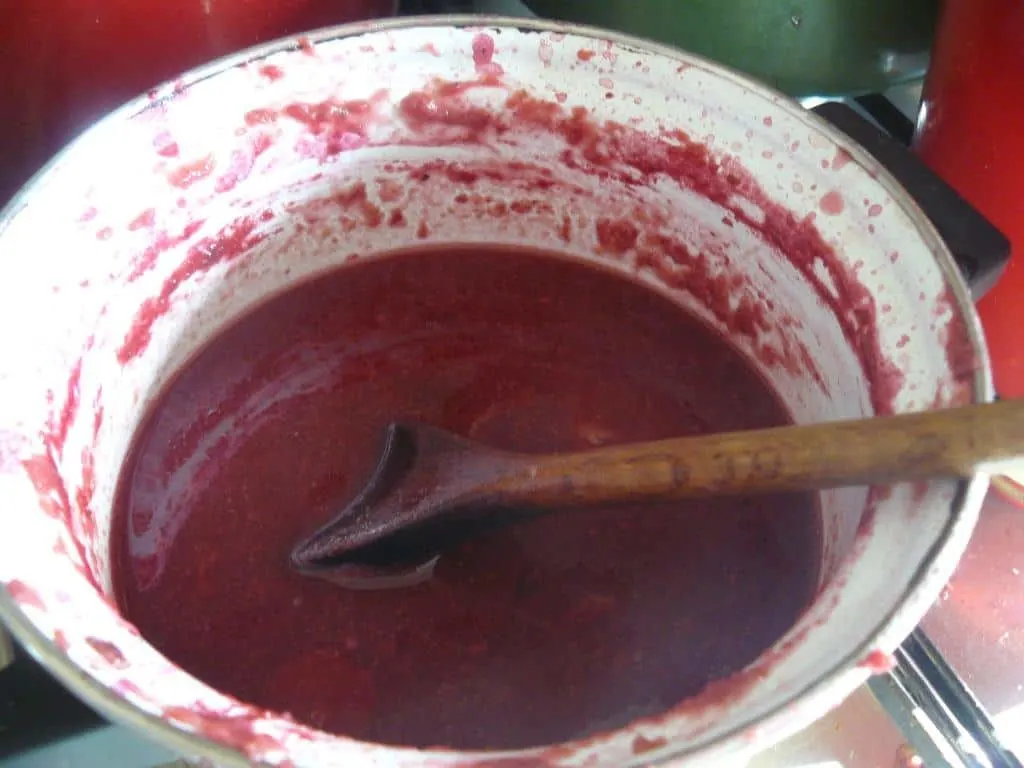
I used my natural pectin to make a raspberry jam, using some raspberries from my forest garden. Raspberries, like strawberries, peaches and nectarines, are low in pectin, and so preserves made using these fruits can benefit from the addition of some of your home-made apple pectin.
The amount of your home-made pectin that you use in your jam will depend on the exact recipe that you choose to use.
However, as a rough rule of thumb, I tend to add around ¼ cup of pectin per cup of fruit included in the jam or jelly. This creates a fairly firm set.
If you want to achieve a softer set then simply use a little less pectin in the recipe.
Pin This To Save For Later
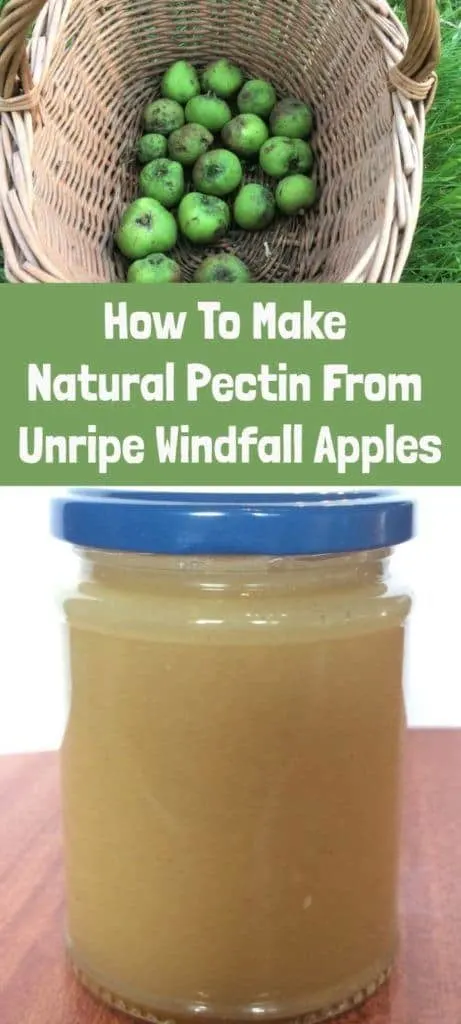
Read Next: How To Make No Sugar Apricot Jam

Get the famous Rural Sprout newsletter delivered to your inbox.
Including Sunday ramblings from our editor, Tracey, as well as “What’s Up Wednesday” our roundup of what’s in season and new article updates and alerts.


